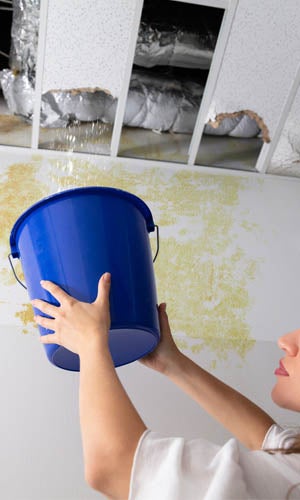6 Ways to Discover Concealed Water Leaks in Your Home
6 Ways to Discover Concealed Water Leaks in Your Home
Blog Article
What're your beliefs about Locating water leaks?

Early detection of dripping water lines can alleviate a possible disaster. Some small water leakages might not be noticeable.
1. Take A Look At the Water Meter
Every home has a water meter. Examining it is a proven manner in which aids you find leaks. For starters, turn off all the water resources. Make sure no one will certainly flush, make use of the faucet, shower, run the cleaning equipment or dishwasher. From there, go to the meter and watch if it will alter. Since no person is using it, there ought to be no motions. That suggests a fast-moving leakage if it relocates. Also, if you find no changes, wait a hr or more as well as examine back once more. This suggests you might have a slow leak that might also be below ground.
2. Check Water Intake
If you detect abrupt changes, despite your consumption being the same, it implies that you have leakages in your plumbing system. A sudden spike in your expense suggests a fast-moving leak.
A constant increase every month, also with the exact same practices, reveals you have a slow-moving leak that's also slowly escalating. Call a plumber to completely examine your building, especially if you really feel a cozy area on your flooring with piping beneath.
3. Do a Food Coloring Examination
When it involves water intake, 30% comes from toilets. Examination to see if they are running appropriately. Drop specks of food shade in the storage tank as well as wait 10 minutes. If the shade somehow infiltrates your dish during that time without flushing, there's a leak in between the storage tank and also bowl.
4. Asses Exterior Lines
Do not fail to remember to inspect your outdoor water lines also. Must water seep out of the connection, you have a loose rubber gasket. One tiny leakage can waste loads of water and also surge your water expense.
5. Analyze the circumstance and examine
House owners must make it a routine to check under the sink counters as well as even inside cupboards for any bad odor or mold development. These 2 red flags show a leakage so timely focus is called for. Doing routine examinations, also bi-annually, can conserve you from a significant trouble.
Inspect for discolorations and damaging as the majority of devices as well as pipes have a life expectations. If you believe leaking water lines in your plumbing system, don't wait for it to rise.
Early discovery of leaking water lines can mitigate a prospective catastrophe. Some little water leaks might not be visible. Examining it is a guaranteed method that assists you find leaks. One small leakage can lose heaps of water and also surge your water expense.
If you think dripping water lines in your plumbing system, don't wait for it to rise.
How to Know If Your Home Has a Hidden Leak
Water Meter Reveals Inexplicable Water Usage
If you’d like to test whether or not there’s a leak somewhere in your home, you can do this using your water meter. Here is how to conduct the test:
Don’t use any water in your home for at least 30 minutes; this also means not turning on faucets or water-using appliances.
Go outside, and check your water meter for activity.
If your water meter shows that there was activity, even though no one was using any water, this proves that there is a leak in your home.Visible Mold or Mildew Growth
Leaks behind walls create moist, dark environments that allow mold and mildew to grow and thrive. Eventually, you might see mold growth forming on the wall closest to a hidden leak.
If mold is growing in an area that receives a high amount of moisture, such as a bathroom, it may simply be an indication that better ventilation is needed. However, if you see mold growth on a wall or the ceiling in an area where you would not expect, you probably have a hidden leak.
Musty, Mildew Odor
Sometimes you might not be able to see the mold or mildew that is growing as a result of a leak. However, the smell can give the problem away just as easily. If you catch a whiff of something musty, there’s a good chance that old water is collecting somewhere in your home that you can’t see.
Stained/Warped Walls, Ceilings, or Floors
When your home soaks up water, a variety of red flags can become visible, including ceiling stains, bubbling drywall, warped walls, and sagging floors. While these issues can be caused by excess humidity, they can also be signs that a pipe or plumbing connection has started leaking behind your walls.
Inexplicably High Water Bill
After a while, you get a general sense for what your water bill should be. If you own a pool or sprinkler system, your bill will tend to be higher during summer. However, if you receive a water bill that seems especially high, and you can’t figure out what caused it, then you may have a hidden leak somewhere that’s increasing your bill.
https://www.plumbingjoint.com/blog/2019/july/how-to-know-if-your-home-has-a-hidden-leak/

I ran across that post on Finding hidden leaks while browsing on the internet. Sharing is good. You never know, you may just be helping someone out. Thank you for your time. Please come visit our blog back soon.
Report this page